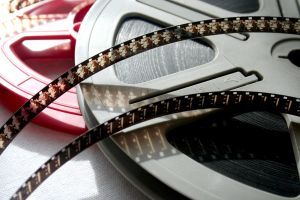Film credits. The movie ends and a long list of names and titles scrolls down the screen. I sit and read them all and leave the theater without the faintest idea of what those people do.
After years of movie watching, my curiosity finally got the best of me. Thanks to filmsite.org, pbs.org, and imdb.com, I can share with you this guide to some of the most common and least understood titles found in movie credits:
First-Assistant Director – The First AD is the director’s right-hand person, and takes responsibility for the practical aspects of the film so the director can concentrate on the creative process. Firsts are charged with making sure every aspect of the shoot keeps to the schedule.
Second-Assistant Director – The Second AD is the First AD’s main assistant and works to ensure that all his or her orders and directions are carried out. Second ADs have two main responsibilities: preparing and drawing up the call sheet, and overseeing all the movements of the cast, including making sure principal actors are where they should be.
Second-Second Assistant Director – An assistant to the Second AD, this position is responsible for directing the movement of the extras.
Producer – Producers are moviedom’s top dogs. They originate and develop the material, hire the director and necessary creative personnel, raise the money to make the film, supervise all stages of production and marketing, and negotiate deals with perspective distributors. It’s good to be a producer.
Executive Producer – Despite this important-sounding title, the Executive Producer does not rank higher than the Producer. Once primarily responsible for the business aspects of film making, Executive Producers in today’s motion picture industry can be the person who brought a property – a novel or play – to the attention of the studio; a key actor in the movie who persuaded the studio to do the film; or the author of a book being made into a movie. In these cases, the title is mostly honorary.
Gaffer – This position is the chief lighting technician, responsible for the design and execution of the production’s set lighting as determined by the film’s Director. The lighting crew reports to him.
Best Boy – The Best Boy is the lead electrician on the set and is usually the Gaffer’s main assistant. Best Boys coordinate the day-to-day activities of the team of lighting technicians, and deal with all the logistics and paperwork relating to the role. They ensure the proper equipment is ordered and schedule the proper quantities for each day’s work.
Grip – Trained lighting and rigging technicians, Grips are primarily responsible for the transportation, maintenance and mounting of cameras. On the sound stage, they are responsible for moving and adjusting major set pieces when something needs to be adjusted to get a camera into position.
Key Grip – The lead Grip on the set, the Key Grip works directly with the Gaffer and best boy to determine how to get the best shot. The Key Grip oversees camera cranes, dollies on other platforms or supporting structures.
Rigger – Riggers do the heavy lifting, working on the ropes, booms, lifts and hoists for the production. Wire Riggers work with the special effects crews to “fly” the actors.
Art Director – The Art Director is responsible for creating and maintaining the visual elements associated with a film’s production, including the design, construction, and coloration of the sets and props, giving the film its visual identity.
Set Designer – Often an architect, the Set Designer creates the structures or interior spaces called for in the film. In addition, he oversees the building of sets, furniture and properties.
Set Decorator – Working closely with the Art Director, the Set Decorator makes the decisions about which furnishings and other decorations will be used on the set, including such items as paintings, fabrics, and other non-movable decorative set pieces.
Set Dresser – Set Dressers arrange the objects on a film set before shooting begins. Working with the set decorator, they place furniture, hang pictures and put out decorative items. During the shoot they work with the prop department to make sure props and furniture are in their proper places.
Stand-In – A Stand-In is a person who has the same physical stature as a particular actor and “stands in” or takes their place during the lengthy set up of a scene.
Body Double – Typically used for shots requiring nudity or depictions of physical fitness, Body Doubles “replace” an actor who prefers not to do a nude scene or whose body may not be suitable for a particular shot.
Now when I go to the movies, I feel empowered and informed. On a recent trip to the multiplex, the woman next to me wondered out loud what Gaffers do. I just hope I kept the smugness out of my voice when I told her exactly what one does on the movie set.




